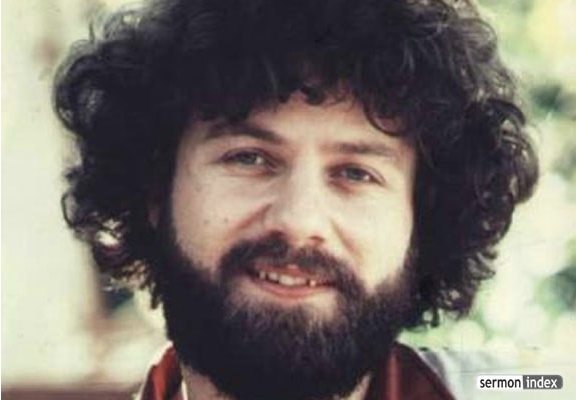As a teenager, I made fashion choices based on three principles: first, comfort. Second, what was most well-suited to the activities I enjoyed, such as basketball. And third, perhaps predictably, whatever would impress others.
I didn’t value appearances, whether in hoodies, art museums, front lawns, or church buildings. It didn’t seem good to look good, except as a means for some other end. I thought beauty didn’t matter.
I was wrong.
As a young adult, I began to take my Christian faith more seriously, and at first, my views of beauty and appearance were only reinforced. Because I struggled with vanity and changing my outward behaviour to be liked, I wanted to rid myself of any “fake exterior.” But I ended up devaluing appearance altogether, which is what beauty is about.
To enjoy beauty is an intrinsic quality of persons. No artificial intelligence will ever be able to enjoy appearances, no matter how advanced multi-model AI becomes.
Beauty consists in what we absorb through our sense organs and in our intellect through contemplation. Most fundamentally, beauty is God-centered: all beauty is from him, sustained by him, and exists for his glory.
It can be all too easy to ignore beauty, treating it as frivolous. Isn’t character what matters most? Doesn’t God judge based on what’s inside rather than appearances? True. See 1 Samuel 16:7 and John 7:24. Aren’t we to worship in spirit rather than in externalities? Also true. See John 4:21-24 and Matthew 23:25. But those texts don’t negate beauty.
Here are seven reasons why beauty matters.
Beauty Is Joy-filled
If you have sought after pleasure, then you have sought after beauty. In the earliest pages of Scripture, we see how God gave us sight to help us smile. “God made all kinds of trees grow out of the ground—trees that were pleasing to the eye” (Genesis 2:9).
While beauty can be part of someone’s struggle with sin (just read how Eve found the tree in the middle of the garden to be “pleasing to the eye”), this doesn’t mean beauty itself is sinful. Quite the opposite.
God gave many instructions in the Old Covenant for decorating the temple. Once completed, going to it brought great joy (Psalm 27:4, 122:1). We have no physical temple to look upon in the New Covenant, but we can look to birds more clothed in splendor than even Solomon’s Temple.
Every bird song and wing flap is an opportunity to replace anxiety with delight (Matt. 7:28-31). For we have a generous God who lavishes his glory across the world.
Beauty Is Biblical
When was the last time you heard a sermon on the blue, purple, and scarlet threads in the tabernacle? Or the shining of Moses’ face? Or the sparkling wheels and glowing metals in Ezekial? Or the wings of the seraphim? Or snow-white clothing? Or walls laced with sapphire, beryl, topaz, and amethyst?
I’m afraid that too many exegetical preachers, myself included, have so focused on the principles behind the text that we’ve failed to appreciate the beauty within the text. Sometimes, the best application of a text is not to ask, “How should I apply this to my life,” but rather, “Isn’t this wonderful?”
God has made everything beautiful in its time (Ecc. 3:11). As we’ve already seen, there are countless references to beauty throughout Scripture. These texts help us know God and train others, according to 2 Timothy 3:16-17. A core aspect of discipleship, then, is to teach others to enjoy beauty.
Beauty Is Counter-cultural
The first sermon I ever preached was on “Living An Authentic Life,” which emphasized how Christians ought to find their identity in Jesus and live in light of that central identity. I remember saying something like, “Do not think about how you look to others, but rather think about how God in the gospel looks at you.”
I still believe this. You shouldn’t focus on how you look to others. But appearances still matter. This article cannot go into all the details of mixed threads, head coverings, and immodest pearls at church gatherings. What should be seen is that appearance matters and has an objective reference point; what you wear ought to reflect certain realities about yourself, such as your sex, your profession, and your Christian identity.
In our Age of Authenticity, appearances are often seen as inconsequential in comparison to the “inner life” within. Some in our culture struggle to speak of beauty because they’ve made it all subjective, which means there is nothing really beautiful at all.
Some elements of beauty are culturally embedded; we should pay attention to cultural norms. But we must conform to God’s law in all areas of life, including how we define and display beauty.
Beauty Is an Apologetic Resource
I am guilty of walking out of a movie and asking, “so what philosophy do you think the movie-makers were trying to share?” There’s nothing wrong with this question. But I think I’d be a more well-rounded individual if I considered not only what is true but what is good and beautiful.
Paul noticed the objects on display in his time (Acts 17:16). We would be wise to do likewise. As Gavin Ortlund has said, “Beauty is one way to engage people more effectively, because it enables us to appeal more comprehensively to the various questions and anxieties that people have.”
In my city of Kitchener, public art is increasingly common. While commercialized and commodified beauty is the norm, the human heart desires pleasure in something for itself, no regardless of whether it’s good for the economy. The naturalist has no purpose for beauty beyond subjective pleasure or practical ends, but the Christian can speak of the grand story of beauty from the garden to the city.
Beauty Has Always Mattered to Christians
Many in the early church were navigating how the writings of Scripture related to Greek philosophy. In Plato’s Republic, he spoke of how most people live looking into a kind of cave; they do not recognize how all the beauty they see is only a shadow of a higher reality. Rather than look at shadows in a cave, Plato instructs us to “turn around” by using our intellects, and the eyes of our souls will be dazzled. If we take his approach, contemplating the source and realm behind this world, we will infer with him, “the author of good and right—parent of the lord of light in this world.”
Early Christians took this “beatific vision” from Plato and applied it to the God of the Scriptures. While not all in the early church were supportive of Neo-Platonism, it is difficult to find writings of church fathers who do not speak of contemplating God (the way of the intellect) for the sake of enjoyment, which will one day be fulfilled in seeing Christ face-to-face. Some historians have put it this way, “Few doctrines are as ‘standard’ in the history of theology, and ignored in contemporary theology, as the beatific vision.”
It is good to place our vision of beauty not in abstract forms but in the reality of Christ, as David Mathias has argued. And this is why many Protestants, such as John Calvin, Richard Baxter, and John Owen have applied the beatific vision in their teaching, according to Hans Boersma.
When Christ meets his bride, she will be dressed without blemish. And when we see Christ, it will bring unending joy to those who look upon him. That is the testimony of the church.
Beauty Is About God
In reflecting on its theological character, Samuel Parkinson says, “Beauty is ultimately an attribute of God the Trinity, revealed wherever Triune glory is made manifest, which is preeminently so in the person and work of Christ.”
God didn’t have to make the world so beautiful. As immaterial spirit, God could have created an immaterial world. Or, in making the material world, he could have kept it in grayscale or with fewer mountains, sunsets, and rainbows. He could have reserved such splendors for heaven. He could have removed such wonders after the fall. He could have remained in heaven, never sending his Son, never extending his grace. But thank God, he did.
Kelly Kapic has described this as God’s indulgence. To indulge in something is to take unrestrained pleasure in it. As we learn in Psalm 104:17, our Creator takes pleasure in his creation. And because of the joy set before Christ, he suffered on the cross (Hebrews 12:2). He looks upon everything he made, and everyone he saves, with a grin.
As you consider this, how do you see Him?
Beauty Is Everywhere
In Love and the Postmodern Predicament, D.C. Schindler says, “For the most part, we do not feel the weight of the givenness of the nature of things. We live in a world increasingly mediated by technology, by the contrivances of human artifice, which tends to set the terms for what things mean to us and how we experience and interpret them even when we are not directly occupied with a particular device.”
In other words, we fail to see things how they are. We interpret any and every object through a selfish lens, a technological lens, which treats all things as tools for personal fulfilment. This is an impoverished and anxiety-ridden way of living in the world.
Against this is the Christian, who treats every person as beautiful and made in the image of God, who treats every aspect of nature as a revealing of God’s divine attributes, and who treats every technology as a gift of God’s common grace directed for a heavenly telos.
Don’t Skip Beauty
Beauty is not an adornment but a revelation. It is not subjective preference but finds is grounded in our generous God.
Beauty has the capacity to elevate us beyond ourselves, even while it appeals to our flesh. As Schindler says, “beauty represents a remarkable source of hope: it is, so to speak, a transcendent call that can be heard by the most flesh-bound ears.”
When we embrace a life of beauty, we receive a gift from God. Tomorrow’s anxieties can be pondered to our own detriment. But for those who contemplate the beauty in the birds, endless joy awaits.
























